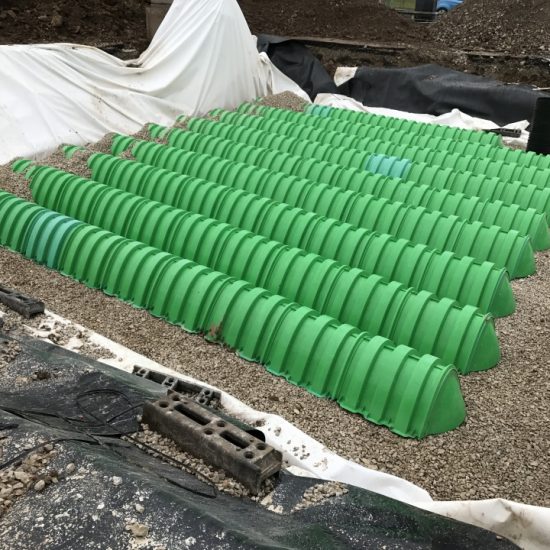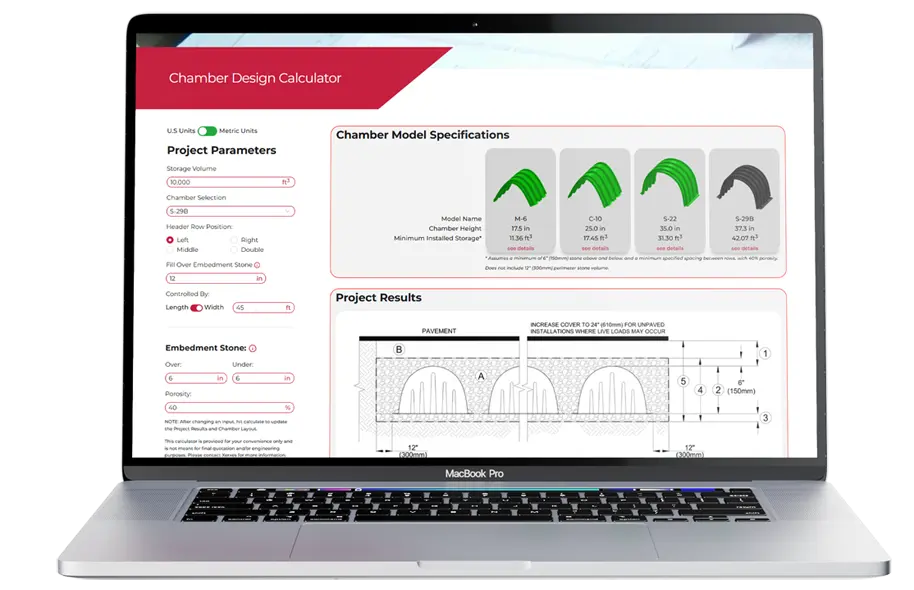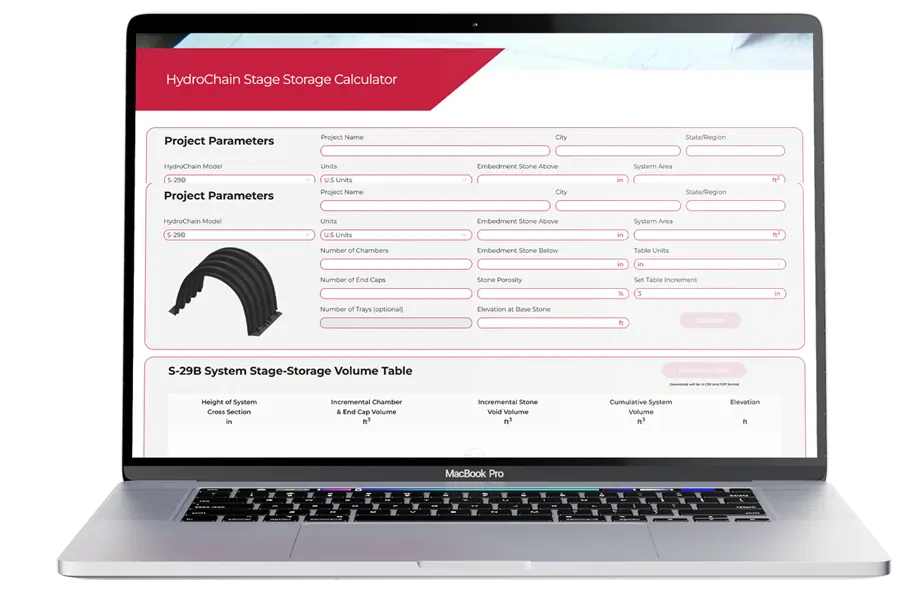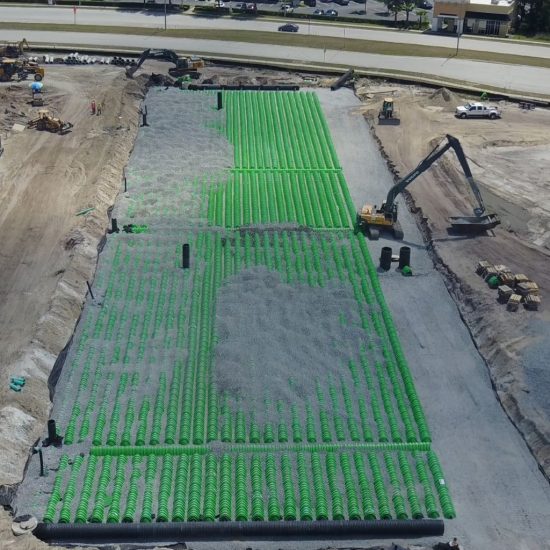M-6 Stormwater Chambers
Reinforced Composite Matters: M-6 Chamber
What sets our corrosion-resistant M-6 chambers apart from most other stormwater chambers is that they are manufactured of fiberglass-reinforced thermosetting plastic. Both the material itself and the fiberglass reinforcement add strength and stiffness, which results in greater durability than unreinforced HDPE and PP chambers. No matter what model of chamber – or combination of models – is best suited for a project, the Xerxes expert team provides a cost-effective, site-specific design for a project.
Designed to meet industry standards, they are evaluated and tested according to the methodology of ASTM F2418 and F2787.

Material
Fiberglass-reinforced polypropylene (FRP)
Industry standards
ASTM F2787, F2418, AASHTO LRFD Bridge Design Specifications
Cover
Height
1.5 ft (0.457 m) minimum
13 ft (3.6 m) maximum
Nominal
L x W x H
29.58” x 33.61” x 17.5”
(751 mm x 854 mm x 445 mm)
Start Designing Your Stormwater System

Chamber Design Calculator
To select a product and create a custom design – including a BOM (Bill of Materials) – use the Chamber Design Calculator.

Stage Storage Calculator
To estimate the volume of storage at different water levels in a HydroChain stormwater system, use the Stage Storage Calculator.

Stormwater Chamber
Success Story
Jacksonville, Florida
A Florida IKEA store needed a six-basin stormwater system to manage runoff from the store’s parking lots, rooflines and surrounding undeveloped land, while also protecting the area’s nearby water sources.
A combination of three chamber models – including the M-6 chamber – to achieve the 259,000 cubic feet of storage required for the site. The system saved over 7,000 square feet of land, saved over 1,200 cubic yards of excavation and over 2,100 cubic yards of crushed stone, while providing more storage capacity than the competitive system originally specified for the site.
The 14,000-chamber system allowed developers to utilize the Main Header Row to filter out sediment where necessary, and allow for direct inlets into the storage chambers when runoff was relatively sediment-free (such as from rooflines) without having to add manholes.

